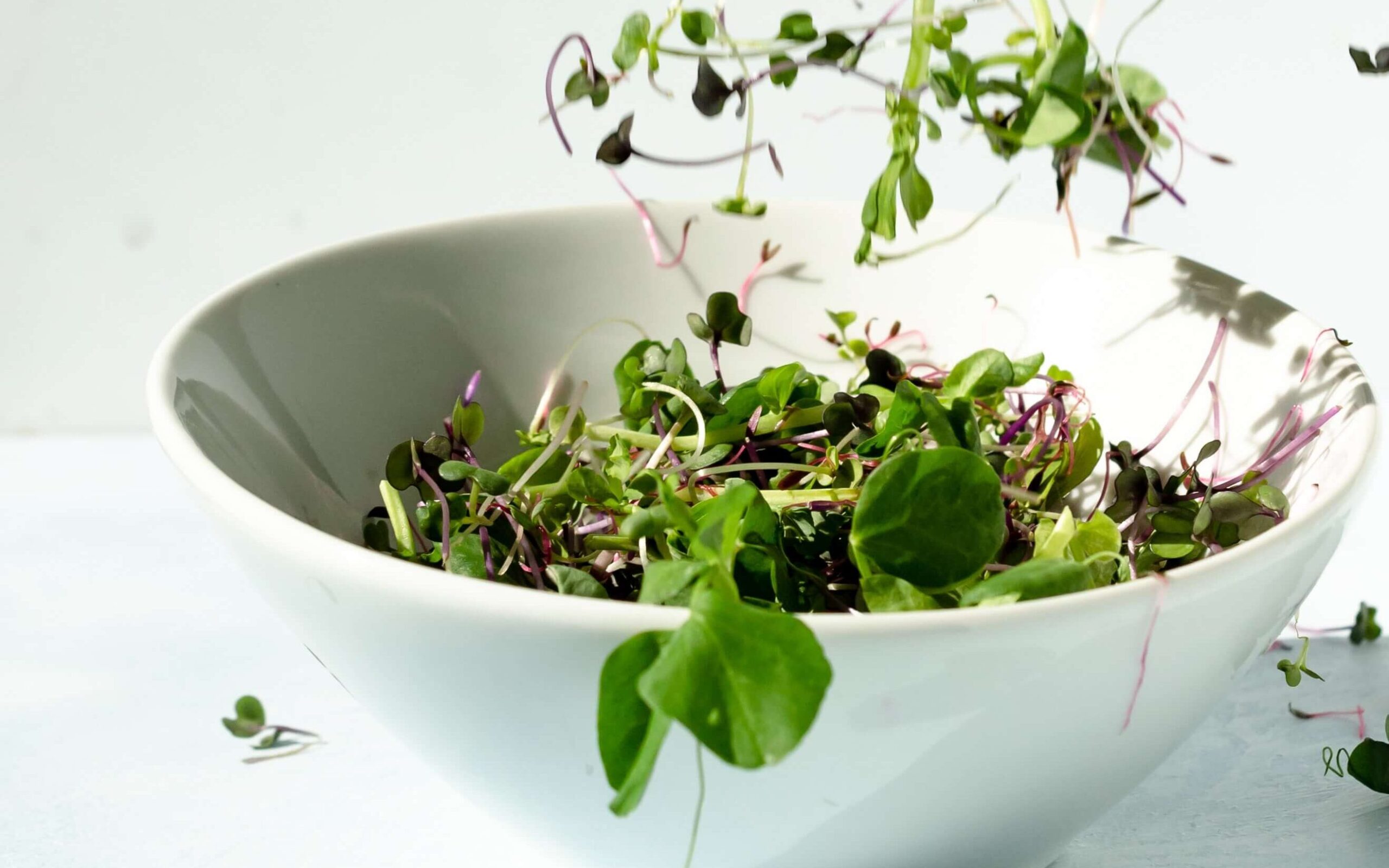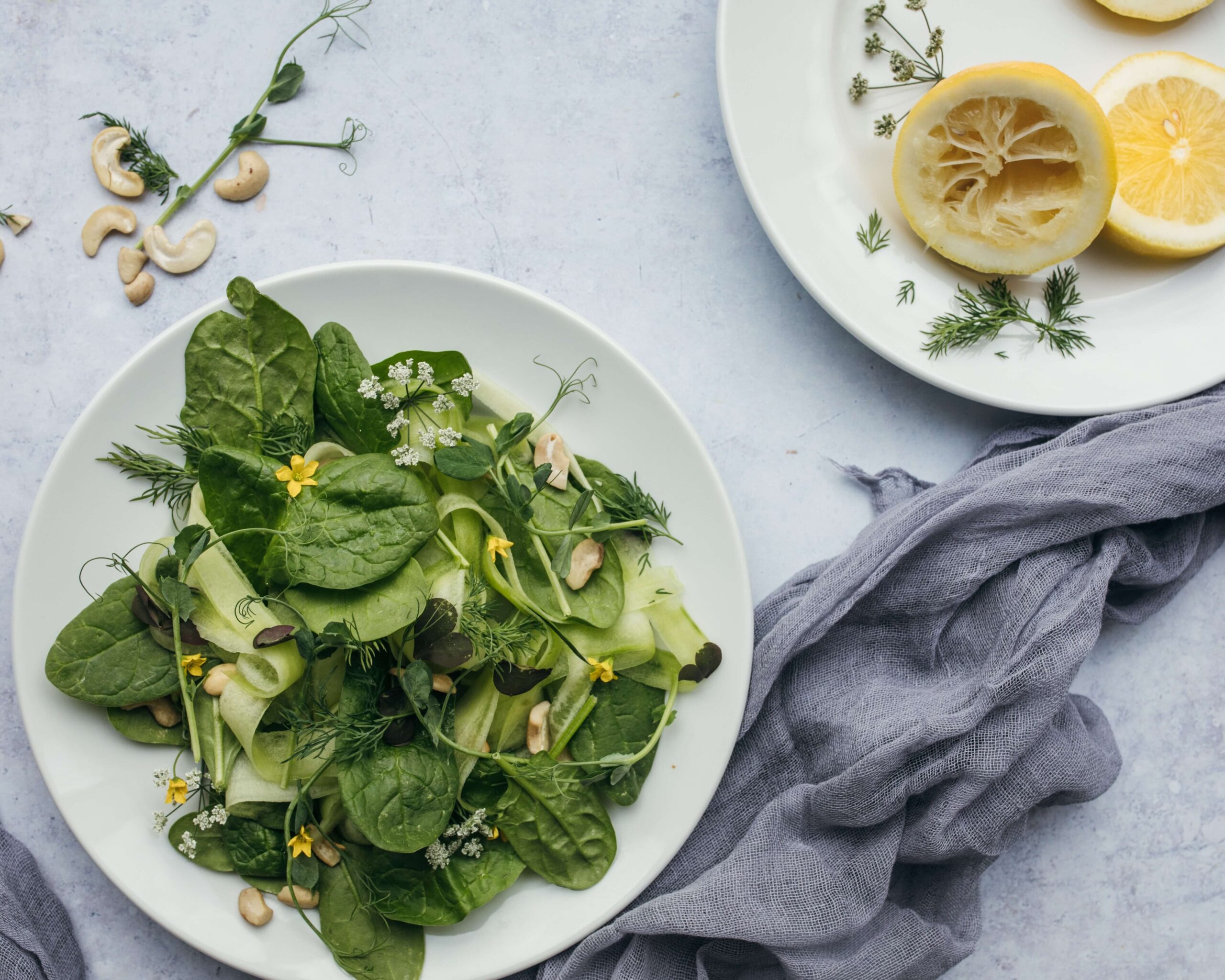
Hello everyone!
Today I am sharing some facts about a super nutritious food (or really a group of food): LEAFY GREENS! This category includes foods like spinach, arugula, swiss chard, kale, mustard greens, turnip greens, collard greens, bok choy, and broccoli raab.
Nutrients in Leafy Greens
Leafy greens are low in calories, but dense in nutrients! Below are some of the micronutrients commonly found in several different leafy greens!
- Fat-soluble vitamins:
- Vitamin A
- Vitamin E
- Vitamin K
- Water soluble vitamins:
- Vitamin B1
- Vitamin B2
- Vitamin B3
- Vitamin B5
- Vitamin B6
- Minerals in Leafy vegetables:
- Iron
- Magnesium
- Zinc
- Potassium
- Calcium
- Phosphorus.
Raw vs Cooked Greens – Which is best?
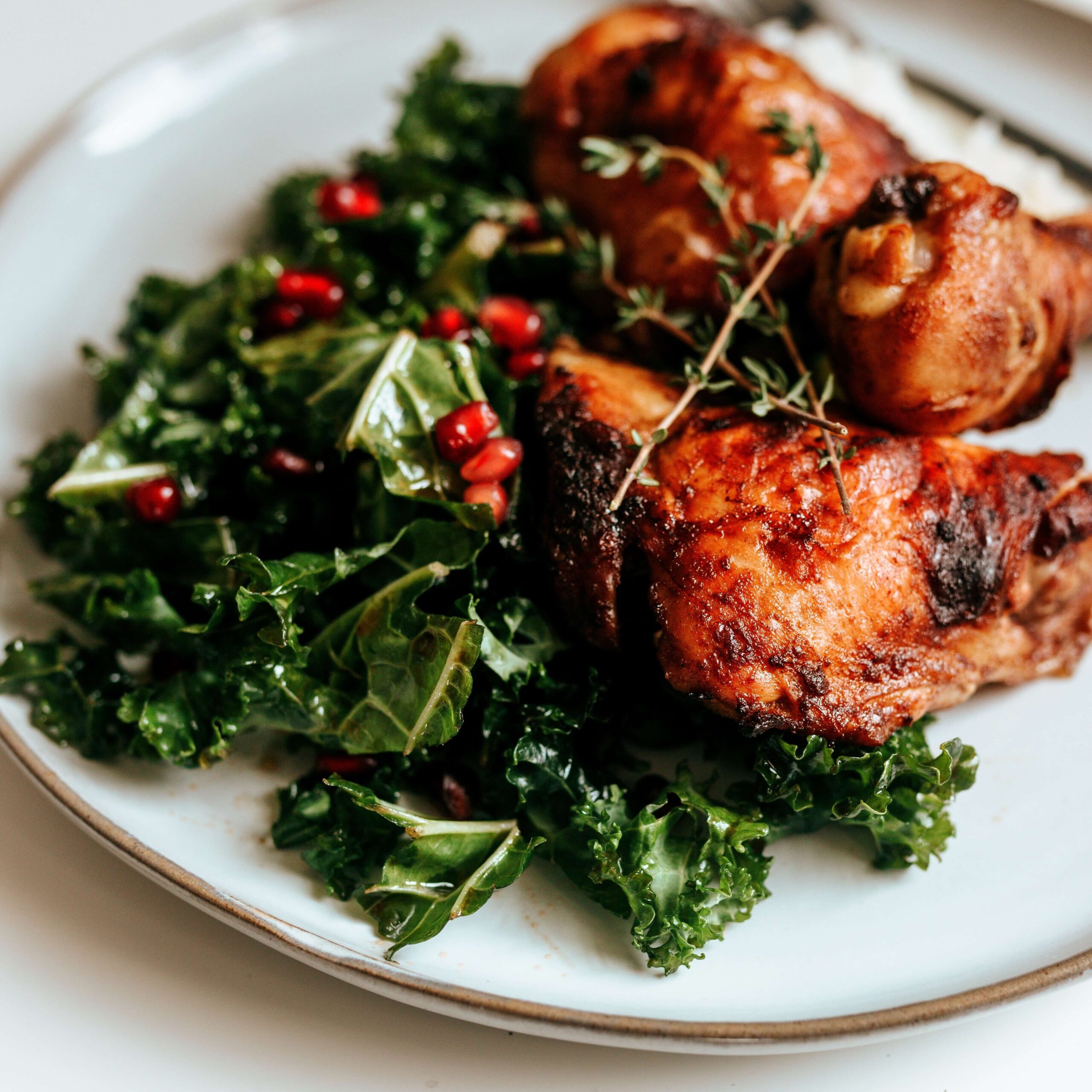
There is some debate about consuming all-raw vegetables, but honestly, it’s best to get a range of both cooked and raw vegetables as part of a cancer-prevention lifestyle! Some nutrients are lost from cooking, such as vitamin C and B-vitamins, but some nutrients are actually more available in cooked vegetables, like beta carotene and iron.
Microwaving, baking, or stir-frying vegetables helps to retain more nutrients than higher cooking temps. Just make sure you aren’t cooking it to a burnt crisp or a soggy brown color! Boiling vegetables tends to leach many of the nutrients in the water, so save the water if you do boil your veggies to get some of those nutrients you would otherwise be pouring down the drain. Add a fat source like olive oil or avocado to your leafy greens to help with absorption of those fat-soluble vitamins!
Anti-Cancer Properties of Leafy Greens
Researchers have extensively studied certain nutrients found in leafy greens for their anti-cancer properties. Dietary fiber, for example, helps to reduce colon cancer risk and may play a role in weight management.
Leafy greens belong in the category of non-starchy vegetables, and generally, a higher consumption of this food group has been linked with lower rates of bladder and breast cancer. Additionally, the nutrients vitamin C and beta carotene (from food) may play a role in reducing the risk of lung cancer.
Antioxidants
Remember antioxidants? Some of the nutrients found in leafy greens such as selenium, vitamin E, vitamin C, and carotenoids act as antioxidants in the body, which neutralize free radicals, protecting the body’s cells from damage. In large doses (supplements) antioxidants can actually have the opposite effect and increase the damage to cells. Get these nutrients from food! Leafy greens are a great source!
Phytonutrients
The beta carotene and lutein in leafy greens play a role in cell signaling, which can help with controlling cell growth and increasing the destruction of irregular cells in the body.
Glucosinolates
These compounds are present in cruciferous vegetables and some bitter leafy greens (mustard greens, kale, broccoli greens), and they are released when the vegetable is cut, chewed, or damaged in some form. These are further broken down into beneficial compounds that help to reduce inflammation, inhibit cancer promoting enzymes, and activate tumor suppressor genes. In breast cancer research, some of these substances known as indoles have been shown to have a beneficial effect in cell and animal studies by converting estrogen to a weaker form.
Recommendation
The AICR recommends getting 2.5 cups of non starchy vegetables per day as part of your cancer prevention lifestyle. Adding leafy greens to your diet can help you meet this target!
Increasing Your Leafy Greens Intake
Fresh, frozen, or canned?
Choose frozen, fresh, and canned forms of leafy greens to avoid throwing out greens that get neglected in the back of the fridge. A quick tip for meal prep: only buy the leafy greens in the store that you want to use within the next few days and have frozen options on hand to quickly add some extra nutrition to meals. Frozen veggies are your best friends towards the end of the week when you are running low on fresh produce or want to put something together FAST.
May not be for everyone . . .
Although they are super nutritious, leafy greens may not be the most popular and tend to be some of the foods that people dislike. Now if you absolutely cannot stand any of the leafy greens, I am not the person saying you have to force yourself to eat them. Please do not make yourself sick trying to eat something you absolutely detest. However, trying out different recipes and methods of preparation can help you experiment with different flavors and textures while also getting in those amazing nutrients that leafy greens have to offer. Who knows? You may even have a new favorite vegetable!
9 Ways to Eat Leafy Greens
Obviously, you can make SALADS with leafy greens, but don’t stop there! There are so many ways to enjoy these wonderful foods as part of a cancer prevention life-style.
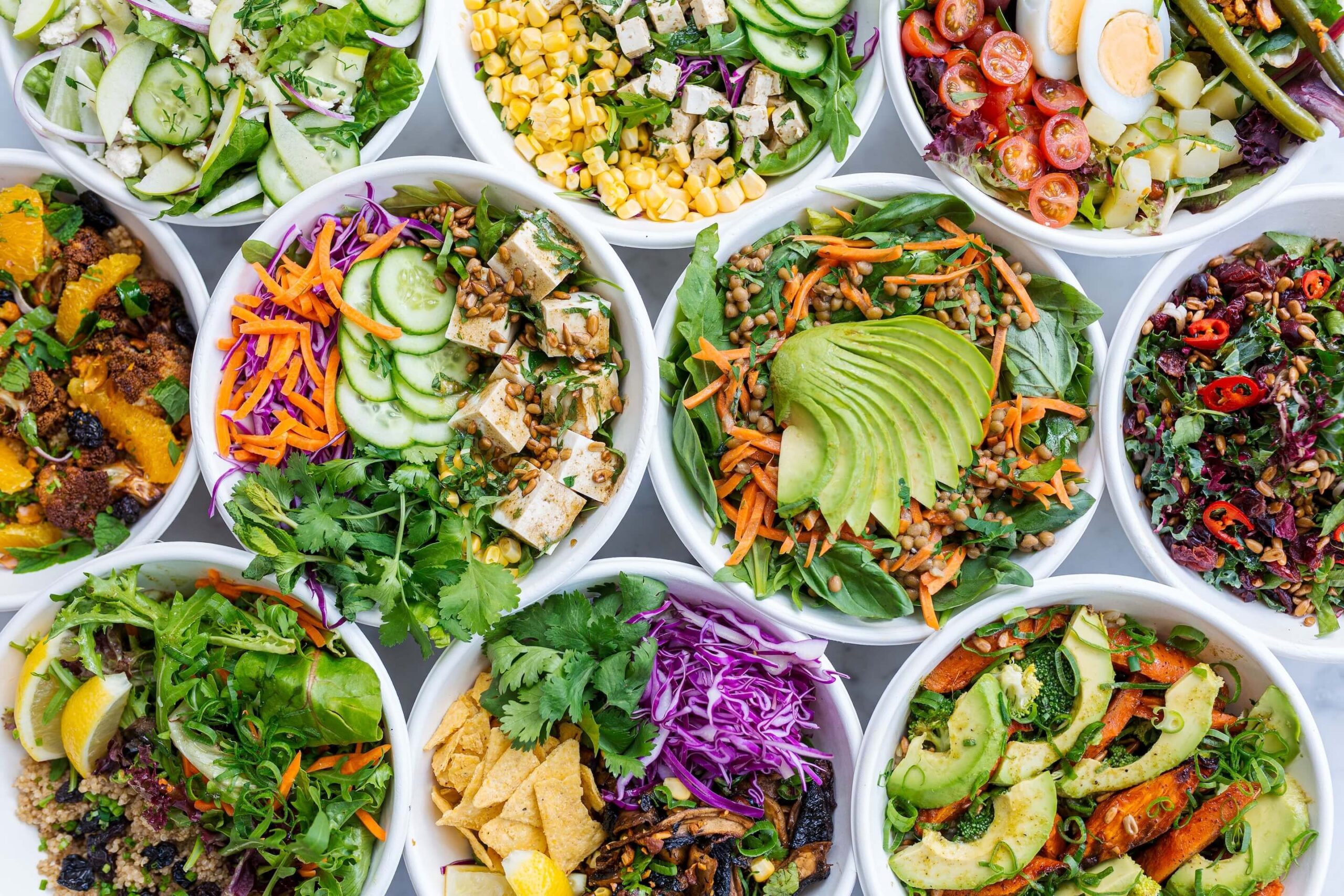
1. Salads
As in chicken and tuna salad! Cut up some spinach, kale, or watercress to throw in with your other ingredients!
2. Soups
Blend for a creamy green soup or add leafy greens to a soup along with some carb (rice, pasta, beans), some protein, and more non starchy vegetables! Some of my favorites include a spicy white bean and kale soup or bok choy with warm ramen!
3. For Breakfast
Start your day with greens and get ahead on the recommendation for non starchy vegetables! Give a splash of color to your breakfast by adding some leafy greens to your omelet or add some kick to your avocado toast with a flavorful green like arugula or mustard greens! Having a bowl of grits? Throw some sautéed spinach in! Trying out savory oatmeal? Add in any leafy green of your choosing!
4. Smoothies
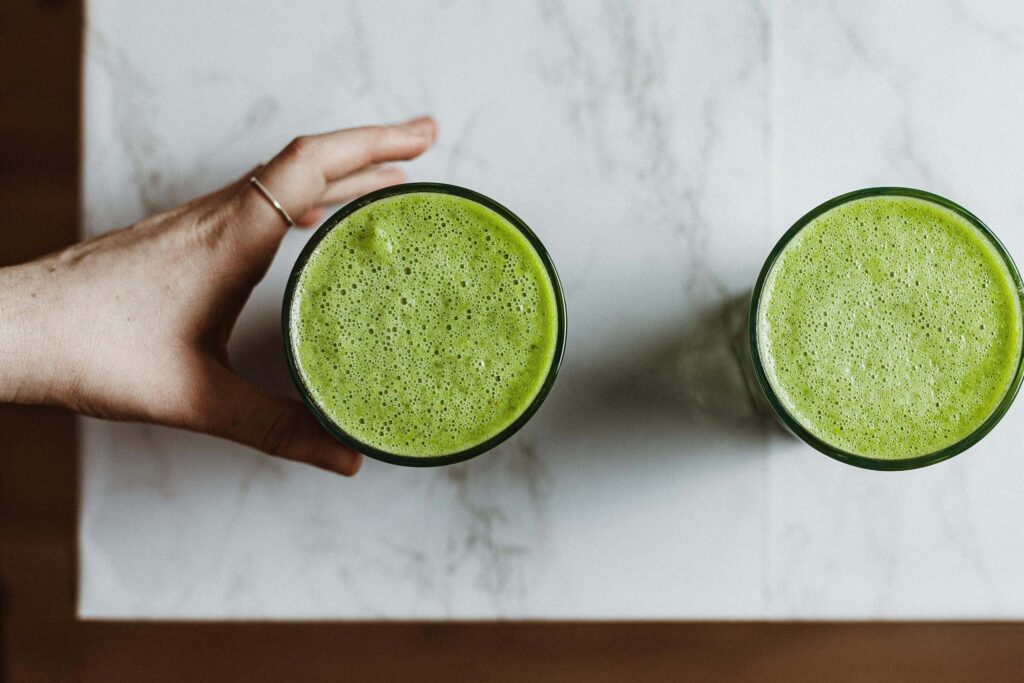
Green smoothies have been all-the rage for the past several years, and although I am not advocating for smoothie cleanses, including a green smoothie for a meal or snack is a great way to pack in a serving of fruit and leafy greens. Try adding some protein and healthy fats for a balanced drink that keeps you full and keeps blood sugar nice and balanced.
5. Chips
Make kale chips or use some other leafy green using your oven or air-fryer. Simply toss some olive oil and your favorite mix of herbs and spices with a 1-2 cups of your leafy greens and cook for a crunchy, nutritious snack!
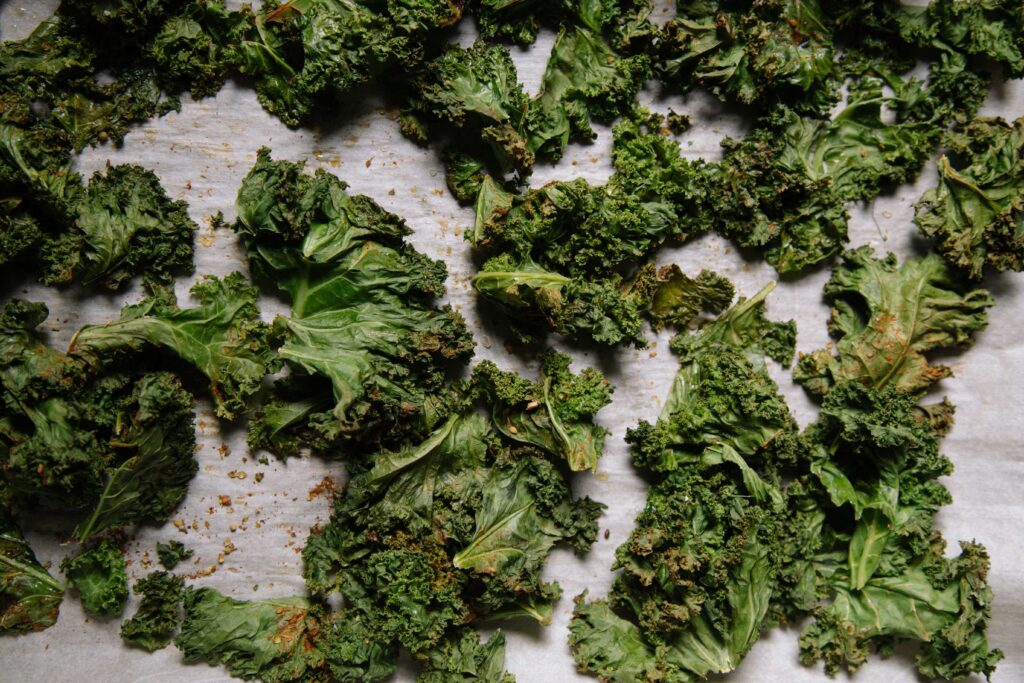
6. Stir Fries
Add your leafy greens towards the end since these cook quickly! Enjoy with some brown rice, fried egg, and chicken or tofu for a nutritious meal!
7. Dips/Sauces
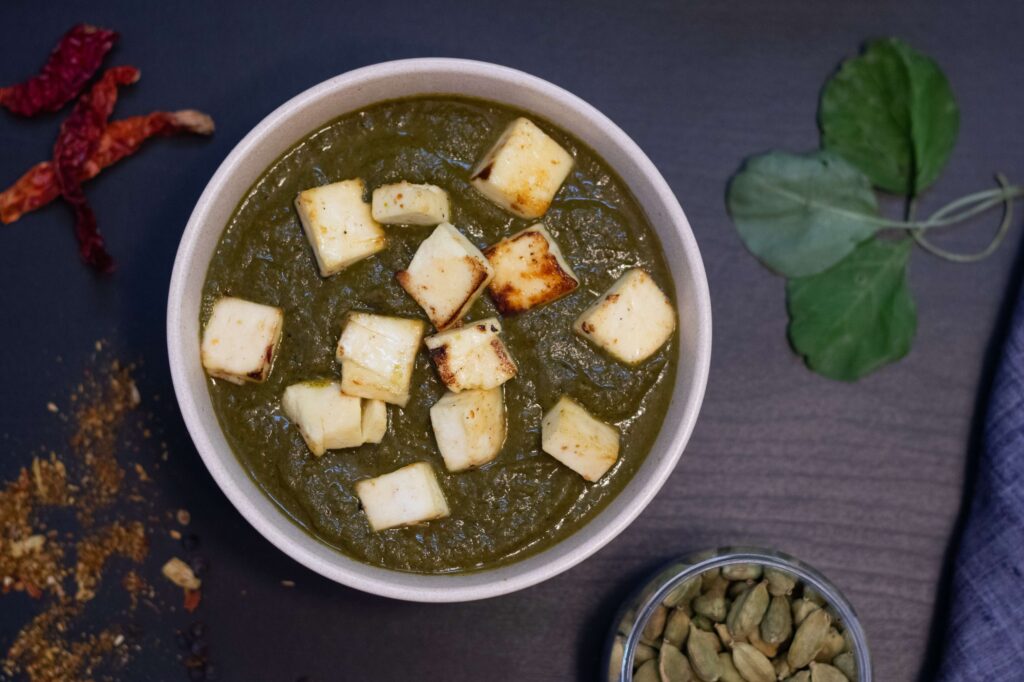
Use a food processor to blend up some cooked spinach with cottage cheese, parmesan, garlic, and basil for a green pasta sauce, or if you’re craving Indian cuisine, try making some saag paneer using spinach and/or other leafy greens!
8. Wraps/Sandwiches
Some greens will give your handheld lunch a nice crunch and flavor! Arugula, for instance, has a nice peppery taste that will elevate your meal to the next level.
9. In Salads – As the Dressing
“Okay the dietitian is really losing it telling me to put salad on my salad”.
It sounds crazy, but think of a homemade green goddess dressing! You make it by blending fresh herbs, a fat source, spices, and leafy greens like watercress all together! This creamy dressing really hits the spot AND you get extra leafy greens in one meal. Win-win!
Closing
Leafy greens have definitely had their moment, but you can get so creative with the different ways to incorporate them into your diet to get all those wonderful nutrients that keep you healthy and play a role in reducing risk for certain cancers! You’ve got this!
Are you wanting to finally learn how to eat to nourish your healthy cells and ditch all the confusion and overload of information online? I have got you covered! Hurry! It is not too late to sign up for my Small Group Cancer Nutrition and Lifestyle Program which starts March 29th! That is five days from now! This program is for those that are fed-up with cancer nutrition BS and are ready to BUST myths, increase their energy and stamina, and improve organ health, all while making connections with fellow survivors and having access to yours truly for 1:1 calls and chat support! Click here to check out more!
If you like this post and want more info about all things related to nutrition and lifestyle after cancer, head to my Instagram and give me a follow!
References
- Azima F, Asben A, Refdi CW, Aulia HS, Syukri D. Effect of different cooking methods on the content of vitamin C, phenolics and minerals in several green leafy vegetables. Pakistan Journal of Nutrition. 2020;19(4):160-165. doi:10.3923/pjn.2020.160.165
- Get more leafy greens with Broccoli leaves. American Institute for Cancer Research. https://www.aicr.org/news/get-more-leafy-greens-with-broccoli-leaves/. Published March 15, 2015. Accessed March 23, 2023.
- Kale: Rich in antioxidants. American Institute for Cancer Research. https://www.aicr.org/cancer-prevention/food-facts/dark-green-leafy-vegetables/. Published August 2, 2021. Updated April 6, 2021.
This blog is not intended as medical nutrition therapy, medical advice, or diagnosis and should in no way replace consultation or recommendations from your medical professional.
